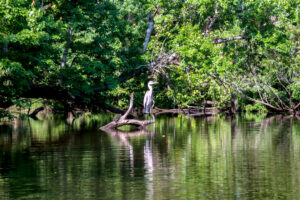
(Nov 22, 2019 BIRLC) In 2016, following a terrible fish kill in the Lagoon, voters overwhelmingly approved a half-cent sales tax to create a trust fund to help pay for projects to repair the Lagoon. This trust fund is estimated to collect more than $450 million over ten years. The use of the funds is specifically outlined in Brevard County’s Save Our Indian River Lagoon Project Plan, a 280-page document that identifies hundreds of projects that either REMOVE or REDUCE pollutants in the Lagoon. The projects are paid for by matching Trust Fund dollars with cities, utilities and other partner organizations who are implementing them. The projects include the removal of leaking septic system, Advanced Treatment upgrades to some wastewater utilities and removal of thousands of tons of “muck” the black mayonnaise-like decaying matter covering much of the Lagoon bottom.
Field studies in Turkey Creek (Palm Bay) in 2017 and at Lake Toho, near Kissimmee, in 2004 both show that removal of muck is associated with reductions in nutrients (nitrogen and phosphorus) entering the water. These nutrients are major causes of the poor condition of the Indian River Lagoon. These studies also reported an increase in plant and animal populations after the muck’s removal.
Until about 1996, our waste treatment plants dumped their partially treated sewage directly into the Lagoon. This largely ended due to the federal Clean Water Act and the IRL System and Basin Act of 1990, reducing contributors to muck formation. Under the Save Our Indian River Lagoon Plan other controls are also being installed, including retention ponds, baffle boxes, etc., which slow the formation of new muck.
In other words, removing muck from the Lagoon floor, combined with reducing nutrient inputs, is a sound strategy for helping to restore the Lagoon.
The Plan and all of the projects are carefully reviewed by an un-paid Citizen’s Oversight Committee that meets in public (and on video) every month. It is worth watching a bit of their proceedings to understand just how seriously these local volunteers, representing Finance, Science, Tourism, Real Estate, Technology, Education and Advocacy, scrutinize every penny and every project. We owe them thanks for watching over our tax dollars.




